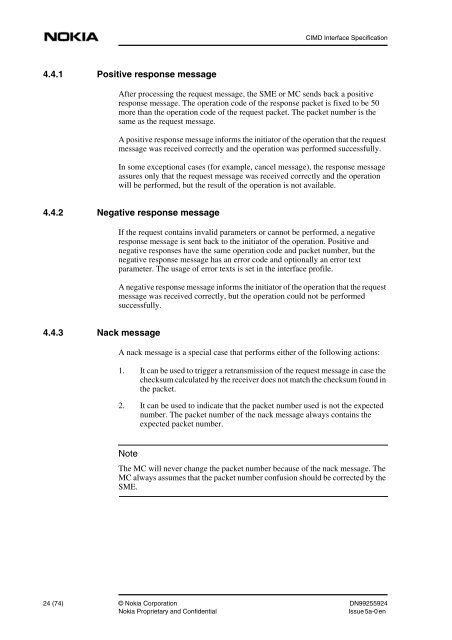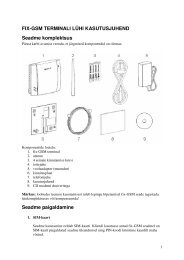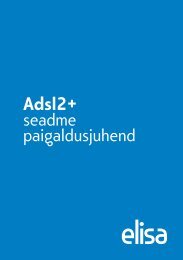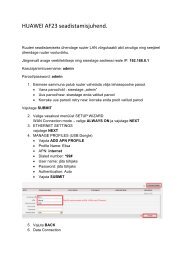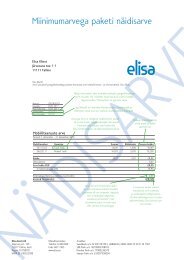CIMD Interface Specification - Elisa
CIMD Interface Specification - Elisa
CIMD Interface Specification - Elisa
Create successful ePaper yourself
Turn your PDF publications into a flip-book with our unique Google optimized e-Paper software.
4.4.1 Positive response message<br />
Note<br />
<strong>CIMD</strong> <strong>Interface</strong> <strong>Specification</strong><br />
After processing the request message, the SME or MC sends back a positive<br />
response message. The operation code of the response packet is fixed to be 50<br />
more than the operation code of the request packet. The packet number is the<br />
same as the request message.<br />
A positive response message informs the initiator of the operation that the request<br />
message was received correctly and the operation was performed successfully.<br />
In some exceptional cases (for example, cancel message), the response message<br />
assures only that the request message was received correctly and the operation<br />
will be performed, but the result of the operation is not available.<br />
4.4.2 Negative response message<br />
4.4.3 Nack message<br />
If the request contains invalid parameters or cannot be performed, a negative<br />
response message is sent back to the initiator of the operation. Positive and<br />
negative responses have the same operation code and packet number, but the<br />
negative response message has an error code and optionally an error text<br />
parameter. The usage of error texts is set in the interface profile.<br />
A negative response message informs the initiator of the operation that the request<br />
message was received correctly, but the operation could not be performed<br />
successfully.<br />
A nack message is a special case that performs either of the following actions:<br />
1. It can be used to trigger a retransmission of the request message in case the<br />
checksum calculated by the receiver does not match the checksum found in<br />
the packet.<br />
2. It can be used to indicate that the packet number used is not the expected<br />
number. The packet number of the nack message always contains the<br />
expected packet number.<br />
The MC will never change the packet number because of the nack message. The<br />
MC always assumes that the packet number confusion should be corrected by the<br />
SME.<br />
24 (74) © Nokia Corporation DN99255924<br />
Nokia Proprietary and Confidential Issue 5a-0 en


